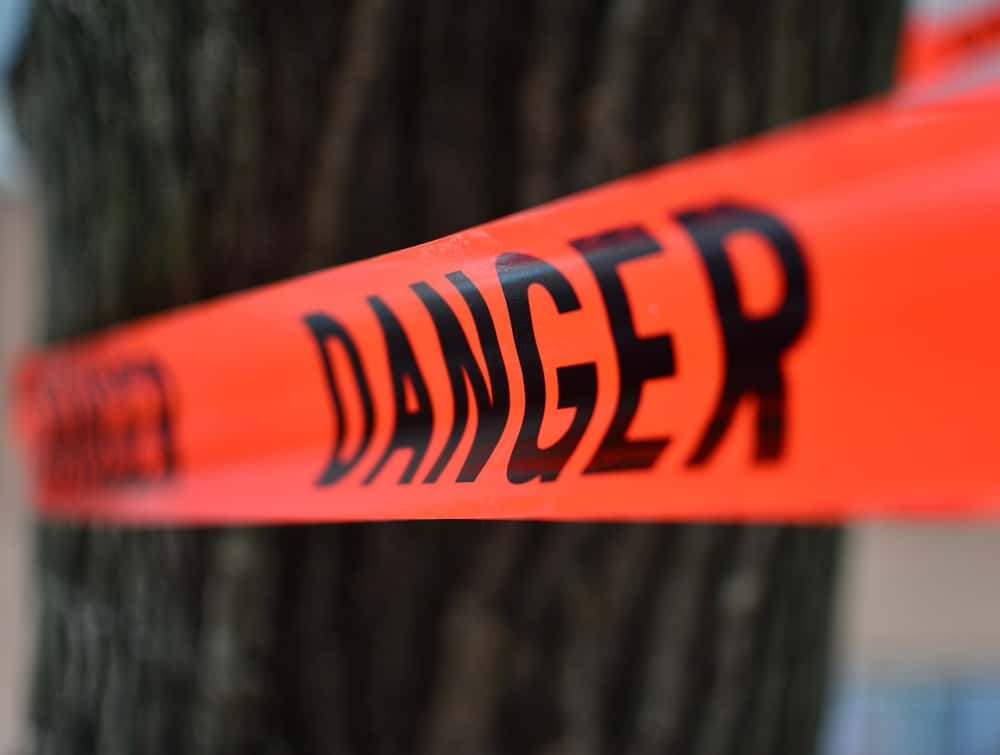It’s important to be aware of the many harmful materials at home. From lead paint to asbestos, there are many substances that can pose serious health risks. In this article, we’ve compiled a list of the harmful materials found in your home – how to identify and avoid them.
1- Top 10 harmful materials at home
2- Conclusion
3- FAQ’s
We don’t always think about the safety of our modern living room interior design, particularly when it comes to the seemingly harmless items sitting on our shelves. From everyday staples such as matches and lighters to seemingly innocuous objects like batteries and potted plants, you might be surprised how these commonplace objects can turn out to be a real danger in your household. Read this article to find out about 10 harmful materials at home that could cause a surprising amount of damage.
Top 10 harmful materials at home
Non-Stick Cookware
We live in a world where non-stick cookware has become a part of every island modular kitchen. They are convenient and comfortable to clean and cook foods with low oil or fat, and are made of polytetrafluoroethylene (Teflon).
You may not have realised that Teflon is classified as one of the 10 harmful materials at home. While using Teflon utensils for food preparation, the heat and gases released have an ill effect on our health and can cause different types of cancer such as kidney, prostrate and ovarian cancers, as well as other serious health ailments.
- Safety tips:
- Food should not be kept for long on non-stick cookware.
- Use low to moderate temperatures while using non-stick cookware.
- Non-stick cookware should be washed gently to avoid damaging the Teflon layer.
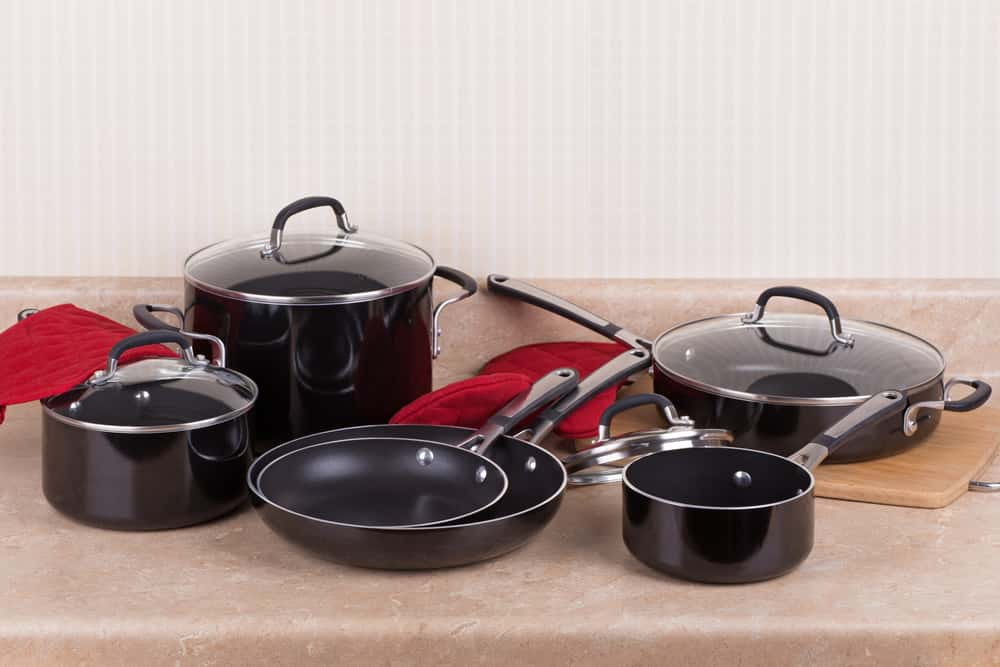
Cleaning Agents
Cleaning agents are very effective in keeping your toilets as well as the floors of your home very clean. The most commonly used type of cleaner is phenyl and these are perfumed to give your home a pleasant odour.
Toilet cleaners mostly contain hydrochloric acid, so mixing bleach with toilet cleaner results in the release of chlorine, which irritates the eyes, nose, throat and skin, and can result in breathing problems. Thus, toilet cleaners are one of the most harmful materials at home.
- Safety tips:
- Using gloves will protect your skin from being splashed by toilet cleaner.
- Keep the exhaust fan on when cleaning the toilet so that any harmful gases can escape.
Detergents and Powders
Detergents and powders are other examples of harmful materials at home. These are used for laundry and cleaning appliances of oil and grease. They come in liquid or solid form and are made of alkalis, which can cause skin and respiratory allergies.
- Safety tips:
- Make sure the room you use detergent in is properly ventilated.
- Use gloves when handling detergents.
- Try switching to natural detergents such as baking soda or lime.
Naphthalene Balls (Moth Balls)
We mostly use moth balls to protect clothes from damage by bugs and moths in wardrobes, washrooms, sinks and wash basins. These balls convert from a solid to a gaseous state and you inhale these gases whenever you happen to pass by. These gases are harmaful and can cause nausea, dizziness, breathing difficulties and skin irritation. They are pesticides and hence come under the list of harmful materials at home. Long periods of exposure to moth balls could also lead to cataract formation and liver damage.
- Safety tips:
- Keep moth balls in an air-tight closed container to avoid the fumes coming out.
- Keep moth balls away from children, pets and plants.
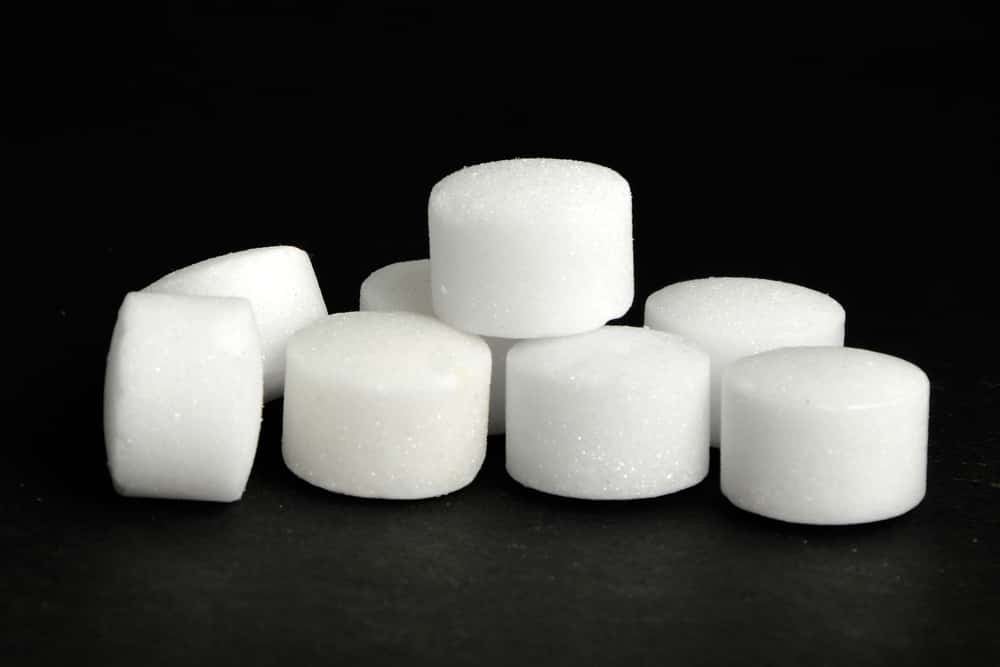
Air Fresheners
Air fresheners are used to keep the home smelling fresh and fragrant, and have probably become a staple in your living room interiors. However, air fresheners emit volatile organic compounds( VOCs) and their usage over time can result in the accumulation of toxins in the body, especially in children.
Exposure for a long time to air fresheners can lead to damage to the kidneys, lungs and nervous system, and can also affect your hormones. Cases of cancer and reproductive problems have also been linked to the use of such harmful materials at home.
- Safety tips:
- Ensure the room has adequate ventilation while using an air freshener.
- Avoid spraying air fresheners around an open flame.
- Instead of using air fresheners to make your home smell good, you could dip cotton balls in essential oils and place them in every room for a clean, non-toxic fragrance.
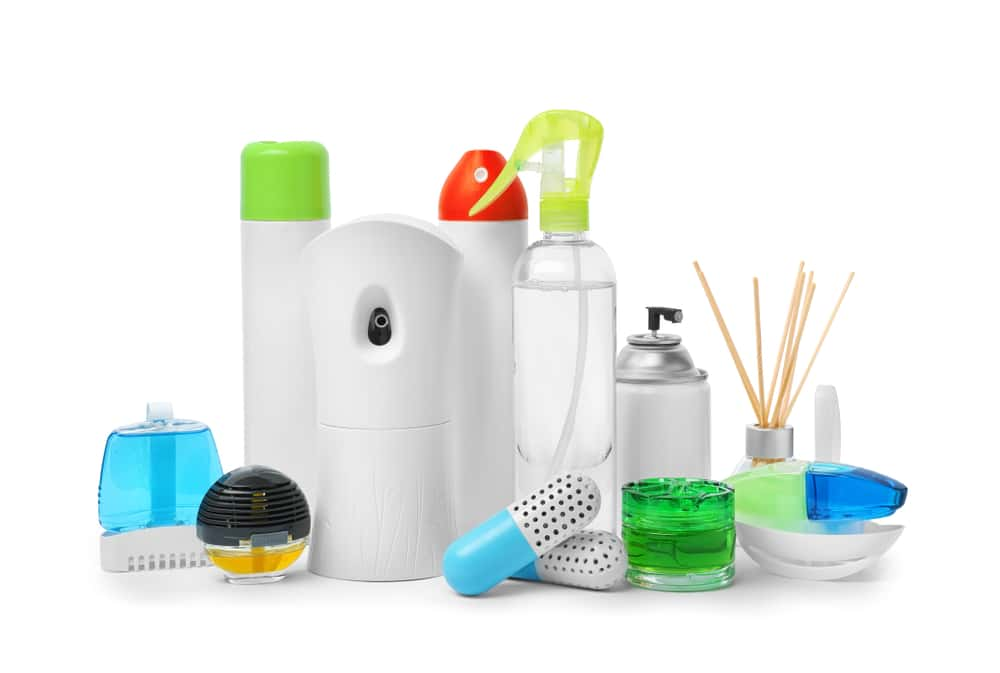
Wood Polish and Waxes
- Wood polish contains chemicals such as ammonia, benzene and phenols, and is also a source of VOCs. It is, thus, one of the most harmful materials at home. Oil-based polishes are inflammable and can be absorbed by your skin, increasing your chances of developing skin cancer. Using polish can also cause nose, throat, mouth and ear pain, breathing difficulties, and dizziness.
- Safety tips:
- Keep polishes and waxes away from fire as they are inflammable.
- Keep polish and wax containers tightly closed and away from children.
- Read the instructions on polish and wax containers carefully before using them.
- Use natural alternatives such as water, vinegar and olive oil instead of polish and wax.
CFL Light Bulbs
Compact fluorescent lamp (CFL) bulbs are more widely used than conventional incandescent lamps due to their low operating cost, long life, energy savings, radiation of less heat, and availability in various shapes and sizes.
However, CFL light bulbs are also one of the most harmful materials at home, as they contain mercury vapour inside the bulb. If this bulb breaks, the mercury vapour that’s released can affect your kidneys, lungs and nervous system.
- Safety tips:
- If a CFL bulb breaks in your home, keep the windows open and leave the room so that the mercury vapours can evaporate.
- Do not use a vacuum or broom to clean up the broken CFL bulb pieces. Instead, you should scoop them up with cardboard or thick paper.
Paint Flaking (Peeling)
Paint flaking refers to the peeling off of paint from walls due to wetness or friction against the painted surface. Lead-based paints qualify among the 10 harmful materials at home as inhaling the vapours from these paints can cause headaches and brain damage, especially in pregnant women and children.
- Safety tips:
- Select paints with a low VOC content for an Indian living room interior design.
- Keep the room well-ventilated while painting to avoid being affected by the vapours from the paint. This will also help the paint to dry faster.
- Any gasoline used should be stored safely where children cannot access it.
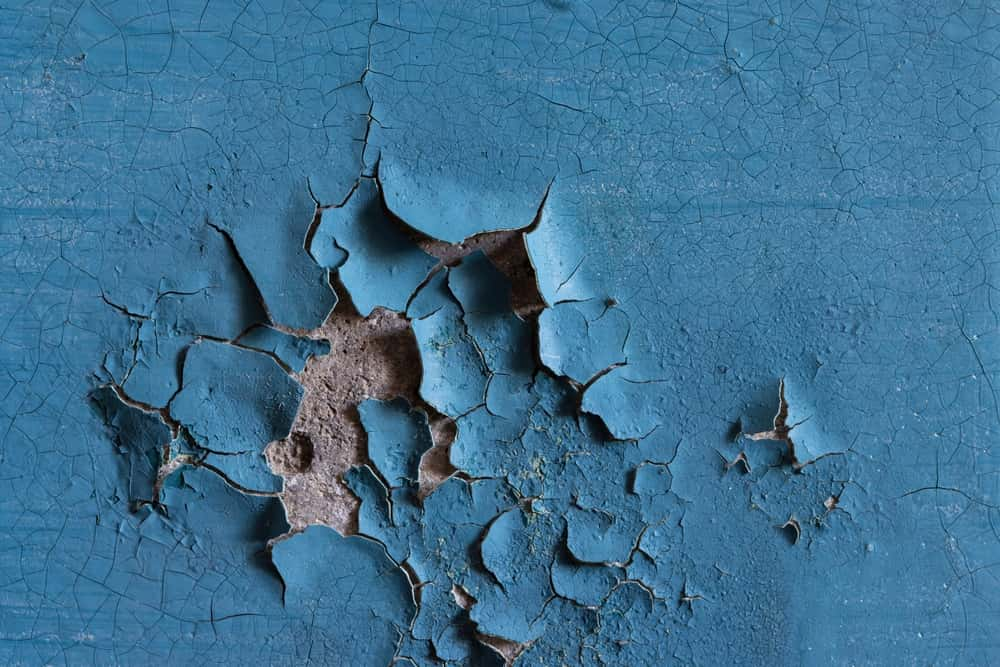
Extension Cords
It sounds strange to see extension cords listed as one of the harmful materials at home, doesn’t it? The usage of extension cords in a small living room interior design is not harmful per se, but the way they are used can result in fatal situations. You may overload your electrical cords without knowing due to a lack of understanding of the voltage capacity. In addition, the usage of substandard-quality electrical products that are not insulated properly might cause electrical fires.
- Safety tips:
- Make sure that you buy extension cords that have been rated for safety.
- Inspect the extension cord for damage before use and discard it if damaged.
- Always remember an extension cord is only for temporary use and does not make a permanent connection.
- Keep extension cords away from children and pets when connected.
Flea and Tick Medications
Nowadays, almost everyone has a cat or dog and fleas and ticks tend to infect these pets. Fleas are parasitic insects that survive on the blood of humans or animals, while ticks are parasitic arachnids like mites and spiders. Pet owners use chemicals to get rid of these fleas and ticks and if you come in contact with these products, it can lead to cancer and neurological problems.
- Safety tips:
- Do not pet an animal for about a day after using a flea or tick medication; alternatively, you can wash your hands and skin with soap after petting the animal.
Conclusion
It is important to be aware of such common yet harmful materials at home and the possible dangers that could be lurking in everyday household items. Being aware of these items can help prevent dangerous accidents or injuries, so make sure to take precautions if you see any of these situations at home. It’s always better to be safe than sorry!
We at HomeLane always endeavour to provide great ideas, from 1 bhk design and 2 bhk design to 3 bhk design, and useful tips for you to feel safe and secure in your home! Read more of our blog posts to uncover such useful facts and tell us what you think!
FAQ’s
What are the most harmful materials at home?
It’s important to be aware of the many harmful materials at home. Examples of harmful materials at home include asbestos, lead-based paint, chemicals in detergents and flea powder, all of which can cause serious health issues if not handled properly. Taking the necessary precautions such as using protective clothing or equipment when handling these materials is essential to stay safe.
What are some examples of harmful materials at home?
There are many examples of harmful materials at home and these include toilet cleaners, non-stick cookware, detergents, air fresheners, and Teflon. These harmful products generally contain chemicals such as lead, formaldehyde, asbestos, and volatile organic compounds (VOCs). Many of these materials can be inhaled or ingested, causing short or long-term health problems.
How do I dispose of leftover paint or wood varnish at home?
You can allow leftover paint or wood varnish to dry, store them in a hazardous waste dispenser, and hand them over to the municipal authorities for disposal. You can also choose to donate any extra paint to a local charity or school.
How can I control the side-effects of harmful materials at home?
You can control the side-effects of harmful materials at home by ensuring that you do not overuse the products and storing them in the original containers with tightly fitted lids. Use certified products and follow the guidelines on the packaging strictly to avoid any complications. Keep these items away from food-handling areas, children and pets.

